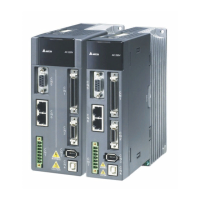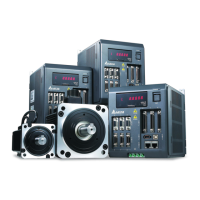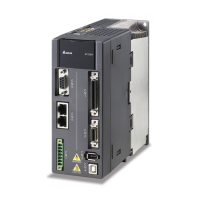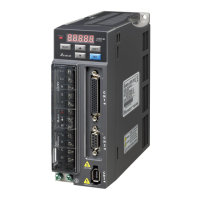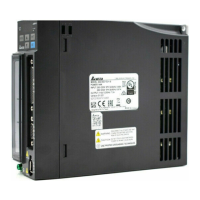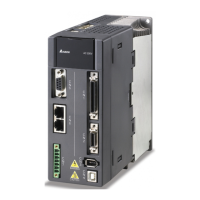Introduction of E-Cam Operation ASDA Series Application Note
2-2 March, 2015
2.1 Introduction of E-Cam
E-Cam, a virtual cam implemented by software that simulates a machine cam. E-Cam curve is
built by software to achieve the relative motion between Master axis and Slave axis like real
cams. If the output of E-cam is the same as that of the machine cams, replacing machine cams
with E-Cam system becomes feasible. Unlike the machine cam, E-Cam can be applied without
the limitation on modifying cam shapes. As long as it is a Master-Slave application and the
Master-Slave relation can be translated into equations, E-Cam can be applied.
What are the advantages when machine cam is replaced by E-Cams?
1. Higher energy efficiency: Eliminating the frictions between mechanical parts such as
cam discs, energy can thus be saved.
2. Modifying cam shape becomes easy: Cam shape can be modified any time to make
different motion.
3. Low mechanical consumption: E-Cam is simulated by software, eliminating concerns on
mechanical consumption.
4. Wide range of application: E-Cam function can be applied to any applications that can be
achieved by the equation; a machine cam is not necessarily required.
5. Flexibility: One master axis can command multiple slave axes, which is rather complex
in the machine cam.
6. Positioning system for physical goods: In application of machine cam system such as
packaging machine, when its cutting shear tries to aim at the target position, the system
is not able to modify the error occurs during printing, thus errors are accumulated
permanently.
What are the disadvantages when replacing machine cam with E-cams?
1. Real time: Signal processing takes time; the synchronization of E-Cam is generally
inferior to mechanical ones. However, this problem can be overcome by firmware.
2. Accuracy: If signal communication is interfered and causing pulse loss, users have to
use other methods to conduct positioning.
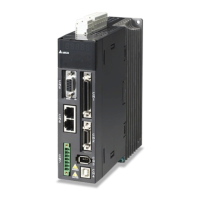
